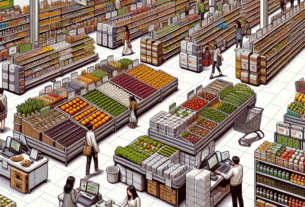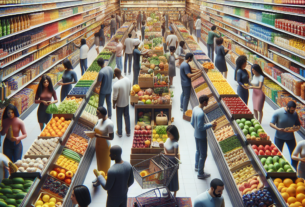The State of the Foodservice Industry in 2025: Trends, Challenges, and Innovations
The foodservice industry has always been dynamic, constantly evolving to meet the changing preferences of consumers. In 2025, the industry is facing a new set of challenges and opportunities as consumer preferences continue to shift. Restaurants are adapting in innovative ways to stay relevant and meet the demands of their customers. In this report, we will explore how restaurants are adapting to changing consumer preferences and the strategies they are employing to succeed in this competitive landscape.
Changing Consumer Preferences
Consumer preferences in the foodservice industry are constantly evolving, driven by factors such as health consciousness, sustainability, convenience, and technology. In 2025, consumers are more health-conscious than ever, with a focus on fresh, organic, and locally sourced ingredients. They are also increasingly concerned about sustainability and environmental impact, leading to a rise in demand for plant-based and eco-friendly options. Convenience is another key factor driving consumer preferences, with the rise of delivery services and on-the-go dining options.
Market Share and Volumes
The foodservice industry is a significant contributor to the economy, with a market size of over $900 billion in 2025. The industry includes a wide range of establishments, from fast-food chains to fine dining restaurants, catering to a diverse range of consumer preferences. In terms of market share, fast-food chains dominate the industry, accounting for over 50% of total sales. However, there has been a shift towards healthier options in recent years, with fast-casual and upscale casual dining establishments gaining popularity.
Financial Performance
The financial performance of restaurants in 2025 varies depending on their ability to adapt to changing consumer preferences. Fast-food chains that have incorporated healthier options into their menus have seen an increase in sales, while those that have failed to innovate have struggled to compete. Fine dining restaurants have also faced challenges, with consumers opting for more casual and affordable dining experiences. Overall, the industry has seen moderate growth in 2025, driven by a combination of innovation and consumer demand.
Strategies for Adapting
Restaurants are employing a variety of strategies to adapt to changing consumer preferences and stay competitive in the market. One key strategy is menu innovation, with restaurants introducing new dishes that cater to health-conscious and environmentally conscious consumers. This includes plant-based options, organic ingredients, and sustainable practices. Technology is also playing a significant role in the industry, with restaurants adopting online ordering systems, mobile apps, and delivery services to enhance convenience for their customers.
Future Plans and Innovations
Looking ahead, restaurants are focusing on further innovations to meet the evolving needs of consumers. This includes partnerships with local farms and suppliers to source fresh, seasonal ingredients, as well as investments in sustainable practices such as composting and recycling. Virtual dining experiences are also gaining popularity, with restaurants offering online cooking classes, virtual tastings, and interactive menus. Overall, the future of the foodservice industry lies in adapting to changing consumer preferences and embracing innovation to stay ahead of the competition.
In conclusion, the foodservice industry in 2025 is undergoing significant changes as restaurants adapt to meet the changing preferences of consumers. By embracing innovation, menu diversification, and sustainability, restaurants are positioning themselves for success in this competitive landscape. As consumer preferences continue to evolve, it is essential for restaurants to stay ahead of the curve and anticipate the needs of their customers. By staying agile and responsive to changing trends, restaurants can thrive in the ever-evolving foodservice industry.



